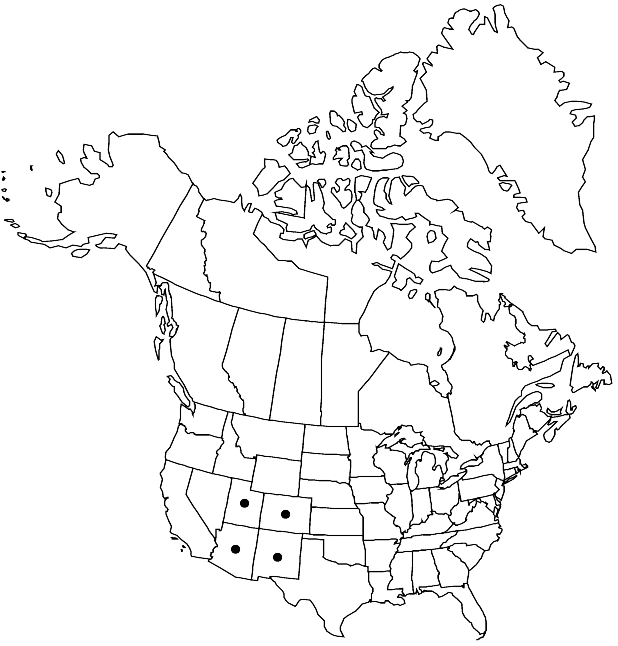Boechera gracilenta
Harvard Pap. Bot. 12: 240. 2007.
Perennials; short- or (rarely) long-lived; apomictic; caudex usually not woody. Stems 1–9 per caudex branch, arising from center or margin of rosette near ground surface, (1.5–)2.5–5.5 dm, densely pubescent proximally, trichomes short-stalked, 2–4-rayed, 0.1–0.5 mm, mixed with some simple ones, to 0.8 mm, glabrous distally. Basal leaves: blade oblanceolate, 2–9 mm wide, margins shallowly dentate or sometimes entire, ciliate proximally, trichomes (simple and spurred), to 1.2 mm, surfaces moderately to densely pubescent, trichomes short-stalked, 4–6(–8)-rayed, 0.1–0.5 mm. Cauline leaves: 4–9, not concealing stem; blade auricles 1–3 mm, surfaces of distalmost leaves usually glabrous. Racemes 7–20-flowered, usually unbranched. Fruiting pedicels divaricate-ascending, gently curved downward, (7–)10–18 mm, glabrous. Flowers ascending at anthesis; sepals pubescent; petals lavender, 6–7 × 1.5–2 mm, glabrous; pollen spheroid. Fruits usually widely pendent, rarely horizontal, not appressed to rachis, not secund, slightly curved, edges parallel, (3–)4.5–7 cm × 1.7–2 mm; valves glabrous; ovules 60–96 per ovary; style 0.1–0.3 mm. Seeds sub-biseriate, 1.2–1.8 × 0.9–1.2 mm; wing continuous, 0.1–0.25 mm wide.
Phenology: Flowering Apr–May.
Habitat: Rocky slopes and sandy soil in pinyon-juniper woodlands and mountain shrub communities
Elevation: 1900-2300 m
Distribution

Ariz., Colo., N.Mex., Utah.
Discussion
Morphological evidence suggests that Boechera gracilenta is an apomictic species that arose through hybridization between B. fendleri and B. pallidifolia; it is superficially similar to the sexual diploid B. perennans but is not closely related (see M. D. Windham and I. A. Al-Shehbaz 2007b for detailed comparison).
Selected References
None.